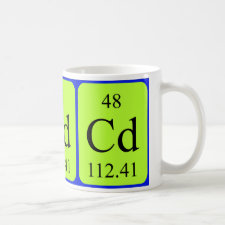
Authors: Chi ZF, Huang HH, Yin Y, Ren LM
Article Title: Selective Recycle of Cd(0) Based on pH/T Switchable Controlled Cd(II) Adsorption on Ion-Imprinted Polymer.
Publication date: 2019
Journal: Fresenius Environmental Bulletin
Volume: 28
Issue: (10)
Page numbers: 7449-7460.
Alternative URL: https://www.prt-parlar.de/download_feb_2019/
Abstract: Magnetic Cd(II) surface imprinting material (Fe3O4/Cs-IIP) was successfully synthesized by using chitosan as carrier, loading Fe3O4 and choosing Cd(II) as template ions to selectively adsorb Cd(II). Scanning electron microscopy (SEM), Fourier transform infrared spectra (FT-IR) and X-ray diffraction (XRD) were used to characterize the prepared Fe3O4/Cs-IIP, and the batch experiments were used to test the kinetics, thermodynamics and reusability of the materials. Kinetics studies showed that the adsorption progress onto Fe3O4/Cs-IIP is well described by the pseudo second-order kinetic model. The adsorption behavior of Cd(II) by Fe3O4/Cs-IIP fits the Freundlich adsorption isotherms model well, and the maximum adsorption capacity is 195.79mg/g. Various thermodynamic parameters such as Δ G, Δ H and Δ S were used to evaluate that this adsorption reaction was a spontaneous and endothermic process. The adsorption efficiency of Fe3O4/Cs-IIP after desorption by alkaline conditions is lower than that by EDTA-2Na. However, the Cd (0) recovery efficiency can reach 76% by electrolysis, which is reduced from the desorbed Cd(II) solution under alkaline condition. These findings provided a new perspective and potential of metallurgical recovery of cadmium in waste batteries.
Template and target information: cadmium ion, Cd(II)
Author keywords: cadmium, ion imprinted polymer, Fe3O4, Cs-IIP, recycling



Join the Society for Molecular Imprinting

New items RSS feed
Sign-up for e-mail updates:
Choose between receiving an occasional newsletter or more frequent e-mail alerts.
Click here to go to the sign-up page.
Is your name elemental or peptidic? Enter your name and find out by clicking either of the buttons below!
Other products you may like:
 MIPdatabase
MIPdatabase









